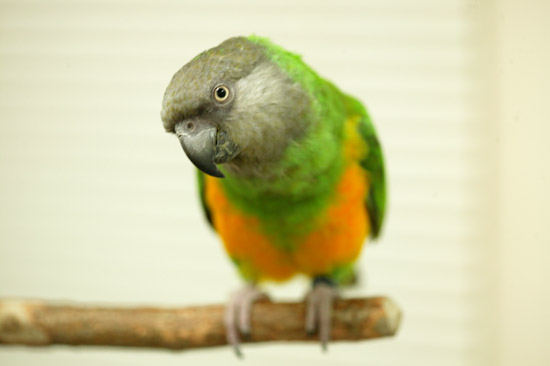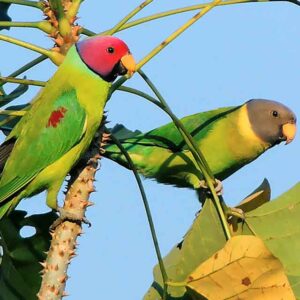Description
Senegal Poicephalus
Things to know about Senegal Poicephalus
Senegal Parrots (Poicephalus senegalus) for sale can be quite sweet for a parrot and enjoy being with their owner. They have a relatively large head and beak for their overall size, and feathers form a short broad tail. Adults have a charcoal grey head, grey beak, bright yellow irises, green back and throat, and yellow underparts and rump. Senegal Poicephalus for Sale
The yellow and green areas on a Senegal parrot’s front form a V-shape resembling a yellow vest worn over green. Young Juveniles have dark grey, almost black, irises, which change to light grey. Senegal Parrots are birds of open woodland and savanna in the wild. They flock most commonly in countries in West Africa and are know to be quite chatty with a full range of whistling and squawking calls.
Size: about 9 inches in length and 5 ounces in weight
Life Span: with care they can live up to 50 years
Senegal Poicephalus behavior
Their calls are generally high pitch whistles and squawks along with mimics, but they are not as noisy as many other parrot species. These Senegal Parrots make good companions and are quite friendly compare to other parrot species. Senegal parrots are independent at times, needing a very fair amount of sleep during the day. Keeping two as pets can very well aid the parrots social and physical health as they have a companion. Senegals have a tendency to become a bit overweight, but are active birds by nature, and will avoid becoming fat if given enough exercise, toys for increased activity, and a good diet.
Breeding: Senegal parrots nest in holes in trees, often oil palms, usually laying three to four white eggs. The eggs are about 1.2 inches long an an inch1 wide. The eggs are incubated by the female, starting after the second egg has been laid, for about 27 to 28 days. Senegal parrots can start to breed at the age of 3 to 4 years in captivity, but some do not breed until age 5 years. Parent rear birds are known to breed as early as 2 years of age.
Diet: Good variety of seeds and fruit and Lafeber’s Avi Cake treats and supplements.
* courtesy of Wiki
DNA Testing
If there is no gender option list for a bird on our website, that particular species is ‘monomorphic’, which means we’re unable to determine gender without purchasing DNA testing. DNA testing is an additional $149 per bird to guarantee preferred gender. DNA testing may add an additional 3-6 plus weeks to estimated delivery time to allow for gender results.


